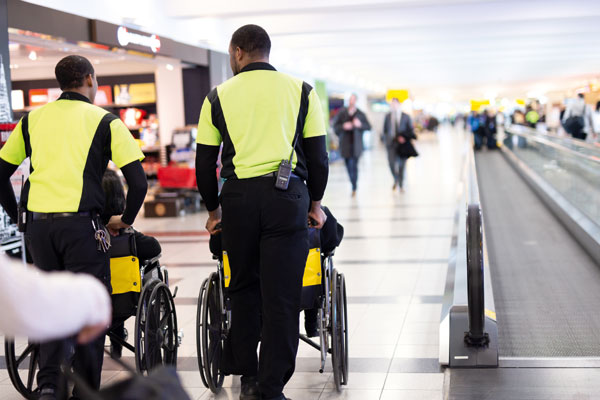The Civil Aviation Authority (CAA) has reported significant strides in accessibility at UK airports.
Their latest report reveals that, for the first time since 2020, no airport has been rated as ‘poor’ in terms of accessibility.
The recent report from the Civil Aviation Authority (CAA) highlights notable improvements in accessibility standards across UK airports. For the first time since 2020, no airport received a ‘poor’ rating, marking a significant milestone in accessibility enhancements. The report evaluated airports handling over 150,000 passengers annually, categorising them as ‘very good’, ‘good’, or ‘needs improvement’ based on their accessibility services.
According to the CAA report, 11 airports achieved a ‘very good’ rating. These include Belfast City, City of Derry, Newquay, East Midlands, Glasgow, Leeds Bradford, Newcastle, Prestwick, Southampton, Stansted, and Teesside. Meanwhile, 12 airports were rated ‘good’, comprising Aberdeen, Belfast International, Birmingham, Bournemouth, Edinburgh, Exeter, Heathrow, Inverness, London City, Luton, Manchester, and Sumburgh. The ‘needs improvement’ category included Bristol, Gatwick, Cardiff, Liverpool, and Norwich.
Heathrow’s advancement from a ‘needs improvement’ rating last year to a ‘good’ status is particularly noteworthy. The airport’s investment in a substantial number of staff dedicated to enhancing accessibility services played a pivotal role in this progression.
Anna Bowles, head of consumer policy and enforcement at CAA, commented on the progress, stating, ‘Progress is being made and not rating any airports ‘poor’ this year is welcome, but there’s more work to do.’ Meanwhile, Karen Dee, AirportsUK chief executive, noted that airports are consistently working towards bettering accessibility with increased investment in staff, training, and technology.
Established in 2014, the CAA’s Airport Accessibility Framework outlines standards expected for passengers with disabilities and reduced mobility. This framework ensures that results are assessed and published annually, promoting ongoing accountability within the aviation industry.
This year’s report accounted for a substantial rise in passenger numbers, incorporating a ‘deep dive’ assessment of specific airports such as Heathrow, Stansted, and Luton. This new evaluative approach aims to continue, ensuring that rigorous standards are maintained amid growing demand for accessible travel.
The CAA encourages further investment in staffing and equipment, particularly during the winter months when flight demand decreases. Additionally, the introduction of a CAA representative at forums for the top 16 busiest airports signifies a commitment to enhancing dialogue and collaboration on accessibility issues.
In summary, the CAA report underscores a positive trend towards enhanced accessibility across UK airports.
While challenges remain, the collective efforts and investments by airports are paving the way for a more inclusive future for air travel.

